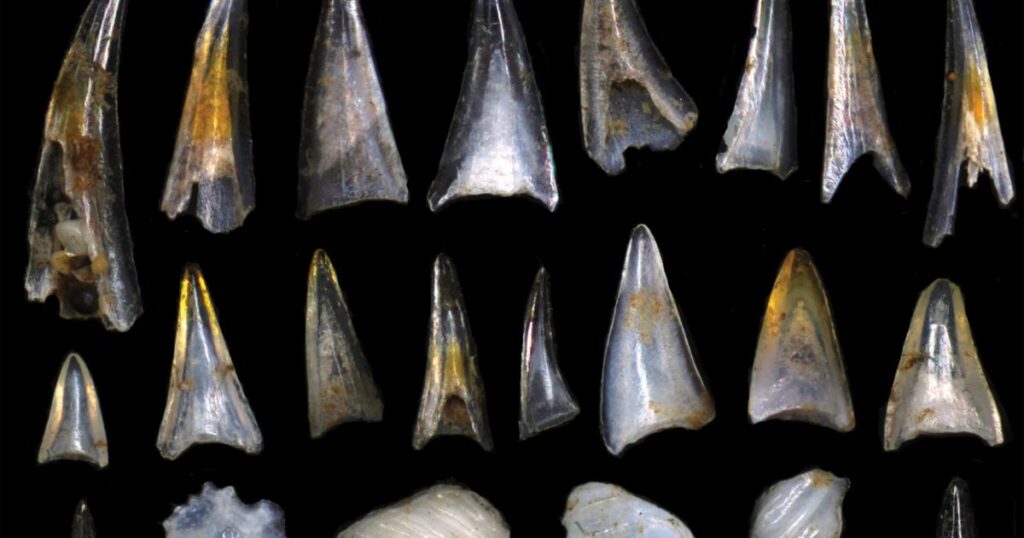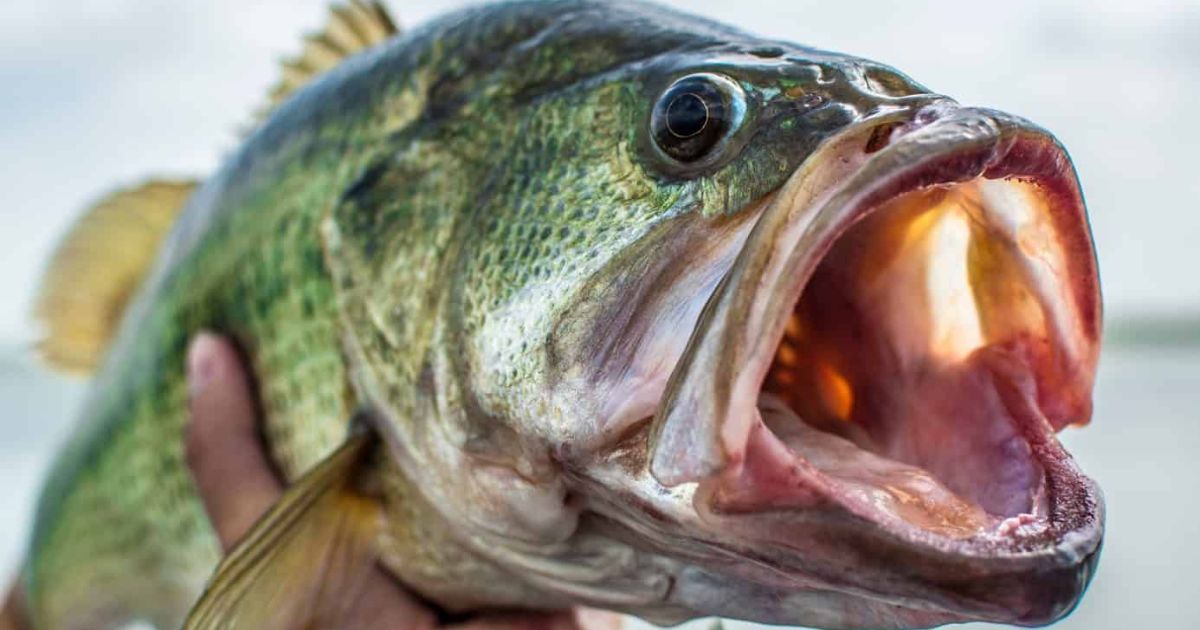Bass, like many other predatory fish, possess teeth specifically designed for catching and consuming their prey. These teeth are sharp and numerous, lining the bass’s jaws, tongue, and the roof of their mouth. They serve to grasp and hold onto their prey, aiding in their feeding process. These teeth aren’t like human teeth they’re pointed and angled backward, helping the bass secure their catch.
Ever wondered, Do bass fish have teeth? Well, the answer might surprise you. Not only do bass have teeth, but they’re equipped with an array of small but sharp teeth, perfect for hunting and capturing their meals. These teeth aren’t just for show hey’re an essential part of how bass survive and thrive in their habitats, allowing them to seize and grip their prey effectively.
Understanding Bass Teeth
The teeth of bass are often underestimated. These fish possess a set of tiny but razor-sharp teeth that can easily pierce through smaller fish and insects. These teeth aid in securing and devouring their food, showcasing the predatory nature of bass as they rely on these specialized structures for their sustenance in the wild. Whether it’s for hunting or defense, these teeth play a crucial role in the life of a bass.
The Anatomy of Bass Teeth
Bass teeth consist of two main types the larger, more visible teeth found in their jaws and the smaller, often-overlooked teeth lining their tongue and palate. The jaw teeth, sharp and pointed, play a crucial role in seizing and holding onto prey. Meanwhile, the tiny teeth within the mouth aid in maintaining a grip on the captured food.
These teeth are strategically positioned to secure a bass’s meal, demonstrating a well-adapted anatomical structure for their predatory lifestyle. The arrangement and sharpness of these teeth enable bass to efficiently hunt and consume their prey within their aquatic habitats.
Purpose of Bass Teeth
The primary purpose of bass teeth is centered around their feeding habits and survival. Equipped with these teeth, bass engage in predatory behaviors, using their sharp teeth to capture, grip, and eventually consume smaller fish, insects, and other prey. Beyond hunting, these teeth also serve a defensive purpose, enabling bass to protect themselves from potential threats.
The evolved design of these teeth showcases their importance in the bass’s ecosystem, facilitating their role as apex predators. The interplay between the structure and function of these teeth underscores their significance in the bass’s life cycle and overall survival strategy.
Types of Bass Teeth

Bass teeth come in two distinct types: the prominent, sturdy teeth in their jaws and the smaller, often unnoticed teeth on their tongue and palate. The jaw teeth are formidable, designed for seizing and securing prey, while the smaller interior teeth aid in maintaining a grip on captured food.
This dual system of teeth allows bass to effectively capture and consume their prey, showcasing an evolved anatomical feature tailored for their predatory lifestyle. The strategic arrangement and sharpness of these teeth play a vital role in supporting the bass’s hunting and feeding behaviors within their aquatic habitats.
Development of Bass Teeth
The development of bass teeth is a fascinating process. As young bass grow, their teeth evolve in stages. Initially, they have smaller, less defined teeth, gradually progressing to sharper and more prominent structures as they mature. This growth reflects the shift in their diet and hunting capabilities.
The development of these teeth is not only essential for their feeding habits but also marks the bass’s transition into becoming proficient predators within their ecosystems. Wondering what to feed bass in a fish tank? Through these growth stages, the teeth of bass play a crucial role in their survival and ability to secure prey effectively.
Adaptations of Bass Teeth
The adaptations of bass teeth are remarkable, finely tuned for their predatory lifestyle. These teeth, both the larger ones in their jaws and the smaller ones within the mouth, are specially designed for capturing and grasping prey. Their pointed and sharp nature enables bass to easily pierce and hold onto smaller fish and insects, aiding in their feeding process.
Beyond hunting, these teeth also act as a defense mechanism, allowing bass to protect themselves from potential threats. Their specialized structure and function underscore their vital role in the bass’s survival strategy, shaping their position as top predators in their habitats.
Comparing Bass Teeth
Comparing bass teeth to those of other fish species reveals unique characteristics. Bass teeth, especially the prominent jaw teeth, are distinctively sharper and more numerous compared to many other fish. The strategic placement of these teeth, along with their pointed structure, grants bass an advantage in seizing and holding onto their prey.
The smaller interior teeth within their mouth further distinguish bass teeth, aiding in securing their food. These comparative features highlight the specialized and evolved nature of bass teeth, contributing significantly to their prowess as effective hunters in their ecosystems.
| Aspect of Teeth | Bass Teeth | Other Fish Species Teeth |
| Size | Distinctively sharp and numerous, especially in jaws | Varied in size and distribution, generally less numerous |
| Structure | Pointed, aiding in seizing and holding prey | Range from pointed to blunt, less specialized for hunting |
| Placement | Strategically positioned for effective prey capture | Differ in placement, not as specialized in grip and capture |
| Interior Teeth | Smaller teeth within mouth aid in securing food | Interior teeth less specialized, primarily for basic functions |
This table highlights the specific features of bass teeth compared to those of other fish species, showcasing the specialized and advantageous nature of bass teeth in hunting and feeding.
Dental Care for Bass
Bass, despite their predatory nature, require minimal dental care. Their teeth naturally regenerate and adapt to wear and tear, ensuring their continued effectiveness in hunting and feeding. While there’s no need for external dental intervention, the bass’s diet and feeding behaviors naturally contribute to maintaining their teeth.
As they hunt and consume their prey, the wear on their teeth is balanced by their ability to regenerate, ensuring these essential structures remain sharp and functional. This self-sustaining dental care mechanism allows bass to thrive without the need for external maintenance.
Behavioral Influence of Bass Teeth
The behavioral influence of bass teeth is profound. These teeth significantly shape the feeding behaviors of bass, dictating how they capture, grip, and consume their prey. The sharp and numerous teeth in their jaws, along with the smaller teeth in their mouth, enable bass to efficiently hunt and devour smaller fish and insects.
Their teeth also influence their defensive strategies, allowing them to ward off potential threats in their habitats. The evolved structure of their teeth profoundly influences their predatory and defensive behaviors, illustrating how these dental features are integral to the overall behavior and survival of bass in their ecosystems.
Research on Bass Teeth
Research on bass teeth delves into understanding the intricacies of these structures and their role in the bass’s life cycle. Studies focus on the development, structure, and function of bass teeth, exploring how these teeth aid in their survival and ecological impact. Researchers investigate the growth stages, wear and tear, and regeneration processes of these teeth.
Such studies shed light on the evolutionary significance of bass teeth and their adaptations, contributing to a deeper understanding of how these dental structures shape the behavior and survival of bass in their ecosystems.
Bass Teeth in Ecosystems
Bass teeth play a significant role in their ecosystems. As apex predators, bass exert influence on their habitats through their hunting and feeding behaviors, which are largely facilitated by their teeth. By controlling populations of smaller fish and insects, bass indirectly impact the balance of species in their environment. Their dental structures aid in maintaining this ecological balance by regulating prey populations.
Understanding the role of bass teeth in ecosystems is crucial to comprehending the broader impact of these predators on their surrounding environment, showcasing the intricate link between their dental adaptations and the overall ecological harmony in aquatic systems.
Frequently Asked Questions
What kind of teeth do bass fish have?
Bass fish have sharp, numerous teeth in their jaws and smaller teeth in their mouth, strategically designed for seizing and gripping prey.
Do bass teeth grow back if they wear down?
Yes, bass teeth naturally regenerate, allowing them to adapt to wear and tear, ensuring continued effectiveness in hunting and feeding.
How do bass teeth differ from other fish species?
Bass teeth are distinctively sharper, more numerous, and strategically placed, providing an advantage in seizing and holding onto prey compared to many other fish species.
Do bass teeth serve any purpose other than hunting?
Beyond hunting, bass teeth also act as a defense mechanism, aiding in protecting the fish from potential threats in their habitats.
Are bass teeth essential for their survival in ecosystems?
Bass teeth play a crucial role in the survival of these predators, influencing their hunting, feeding behaviors, and the ecological balance in their habitats.
Conclusion
Bass teeth are more than just sharp structures for catching prey they’re a vital element in the bass’s survival toolkit. These teeth, both in the jaws and inside their mouth, are finely tuned for hunting and feeding. They’re the key to how bass thrive in their ecosystems, allowing them to grip, capture, and consume their meals effectively. Not only do these teeth aid in their feeding, but they also play a role in defending against potential threats, showcasing their multifaceted importance in the life of a bass.
Understanding the intricacies of bass teeth sheds light on the remarkable adaptations nature has provided these predators. From their ability to regenerate to their specialized structure, bass teeth represent the culmination of evolution in response to their predatory lifestyle. The significance of these teeth extends beyond mere feeding—they influence behavior, impact ecosystems, and contribute significantly to the success of bass as top predators in their aquatic habitats. Their teeth tell a story of adaptation and survival, painting a picture of how these fish have become masters of their watery domains.

